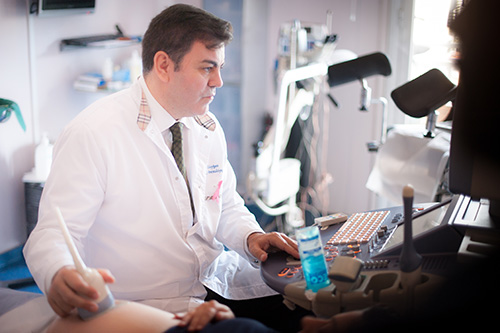


In the 3rd month, specifically between the 11th and 14th week of pregnancy, the cervical transparency ultrasound is performed, in which the thickness of the fluid under the skin on the fetus's neck is measured.
If this is found to be elevated, then there is an increased chance of Down syndrome.
The likelihood is higher in older women.
The sensitivity of ultrasound to detect Down syndrome is approximately 80%.
In combination, now, with the determination of two proteins in the blood of the pregnant woman, PAPP-A and free β chorionic gonadotropin, we manage to increase the sensitivity of the method for detecting fetuses with S. Down in 90% (according to Cyprus Nikolaidis, the researcher who discovered the method, the detection rate can be as high as 94-97%, when the test is performed in centers certified by the Fetal Medicine Foundation.
The result is expressed as a probability, the probability that the fetus has the problem, e.g. 1/300 or 1/1000 or 1/10,000 (one to so).
As a limit, arbitrarily, as a "threshold", we have defined 1/300, so if the probability of Down syndrome is higher (e.g. 1/100 or 1/200), then it is suggested that the woman consider whether she would like to undergo a invasive test that provide an accurate diagnosis of the presence or absence of chromosomal abnormalities (including Down syndrome).
These tests are chorionic villus biopsy (trophoblast sampling) and amniocentesis.
However, every woman should remember that cervical transparency is a population control method (screening test) and NOT a diagnosis method!